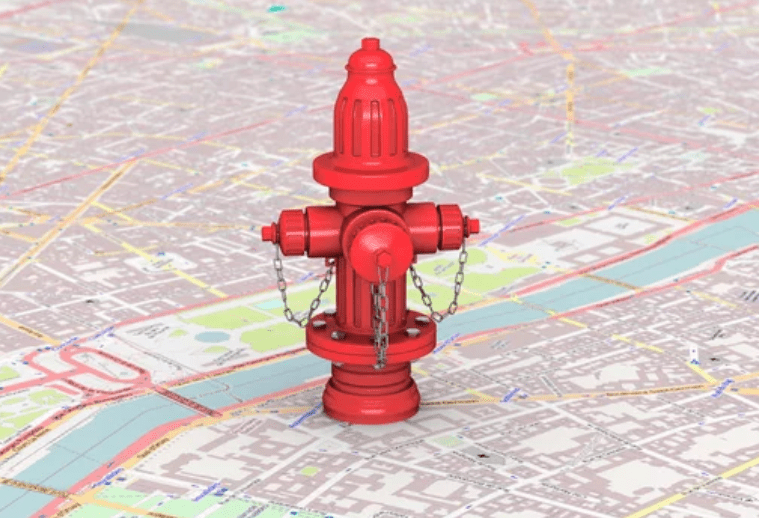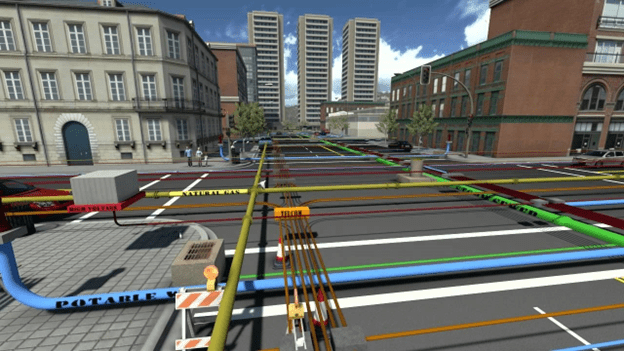
Utility mapping is a crucial aspect of infrastructure planning and development. It involves identifying the location and characteristics of underground utilities such as water, gas, electric, and telecommunications lines.
Accurate utility mapping can prevent costly damages to these systems during construction and maintenance projects, ensuring public safety and minimizing disruptions to essential services.
In recent years, the economics of utility mapping has become increasingly important as governments and businesses seek ways to reduce costs and improve return on investment (ROI).
The cost savings associated with utility mapping are significant. Accurately locating utilities before excavation or drilling can prevent damage to existing infrastructure, reducing repair costs and avoiding project delays.
It also minimizes the risk of injury or property damage from accidental utility strikes. Additionally, accurate maps can help identify areas where infrastructure is underutilized or redundant, allowing for more efficient use of resources.
These factors contribute to lower overall project costs and improved ROI for public and private infrastructure development entities.
Importance Of Accurate Utility Mapping
Accurate utility mapping is a critical aspect of any construction project. It involves identifying the exact location of underground utilities such as gas, electricity, and water lines.
The importance of accurate utility mapping cannot be overstated as it helps prevent costly accidents like gas leaks and electrical fires. Moreover, it saves time and resources that would have been spent on fixing damages.
Utility mapping also plays a significant role in ensuring regulatory compliance. Before any excavation or construction work begins, contractors are required to perform a thorough investigation of the site’s existing underground utilities.
Failure to do so can result in hefty fines and legal liabilities, significantly impacting a project’s timeline and budget.
In addition to safety and regulatory compliance, accurate utility mapping offers an excellent return on investment (ROI). By investing in proper utility mapping, contractors can minimize costly mistakes like digging into underground pipes or cables accidentally.
This saves money and can help build their reputation and credibility within the industry.
The Cost Of Inaccurate Utility Mapping
The cost of inaccurate utility mapping can be significant. Construction crews may accidentally damage underground infrastructure, such as water pipes or electrical cables, without accurate maps. This leads to costly repairs and potential safety hazards for workers and the public.
Furthermore, inaccurate utility mapping can result in project delays and increased costs. If a crew encounters unexpected underground infrastructure, they may need to halt their work until they can obtain accurate information about the location of the utility lines. This delay can lead to increased labor costs and lost productivity.
Investing in accurate utility mapping can save money in the long run. By avoiding damage to underground infrastructure and minimizing project delays, companies can complete projects more efficiently and cost-effectively. The initial investment in accurate mapping technology will pay off with reduced risk and increased return on investment.

Potential Cost Savings Through Utility Mapping
As discussed in the previous section, inaccurate utility mapping can lead to significant costs for construction projects. However, investing in accurate utility mapping can result in potential cost savings for these projects.
One way that accurate utility mapping can save costs is through reduced damage to existing utilities during excavation. With accurate mapping, construction crews can avoid accidentally damaging pipes or cables, which can require costly repairs and delay project timelines. Additionally, avoiding damage to utilities can also prevent safety hazards and environmental damage.
Another potential cost-saving benefit of utility mapping is improved project efficiency. Accurate maps allow construction crews to plan to work more effectively and avoid last-minute changes due to unexpected underground obstacles. This results in fewer delays and less wasted time and resources on the job site.
Overall, while investing in accurate utility mapping may require an upfront cost, it has the potential for a significant return on investment through avoided damages and improved project efficiency. By prioritizing accurate utility mapping from the start of a construction project, companies can save money while ensuring safer and more efficient outcomes.
Improved Return On Investment (Roi)
Are you looking to maximize your return on investment (ROI)? Utility mapping can help you achieve just that. By investing in accurate and comprehensive utility mapping, businesses can save time, money, and resources in the long run.
One way utility mapping improves ROI is by reducing the risk of costly damages and accidents during construction or excavation projects. With accurate information about underground utilities, companies can avoid potential damage to pipes or cables, saving them from expensive repair costs and project delays.
Another benefit of utility mapping is the ability to identify areas for improvement and optimization. By analyzing data from utility maps, businesses can identify inefficiencies in their infrastructure and make informed decisions on how to improve their operations. This can lead to increased productivity, reduced downtime, and ultimately higher profits.
Investing in utility mapping is wise for businesses looking to improve their ROI. By avoiding costly damages, optimizing infrastructure, and increasing productivity, companies can achieve significant cost savings in the long run.
Don’t wait until it’s too late – start reaping the benefits of utility mapping today!
ROI CALCULATOR
Public Vs. Private Sector Utility Mapping Economics
Improved return on investment (ROI) is critical to utility mapping economics. By accurately identifying the location and condition of underground assets, organizations can reduce the cost of maintenance and repair, minimize project delays, and avoid accidents. This leads to a higher ROI, as the savings from these benefits outweigh the initial cost of implementing a utility mapping program.
One way to maximize ROI is by choosing the right type of utility mapping service provider. While some organizations opt for in-house teams or local contractors, others prefer to outsource to private-sector companies specializing in utility mapping. Public sector entities may face budget constraints and limited resources, whereas private companies may have more advanced technology and expertise that can lead to greater accuracy and efficiency.
The decision between public vs. private sector utility mapping economics depends on various factors such as budget, timeline, scope, and risk tolerance. To help organizations make an informed choice, here is a table comparing some key features:
| Feature | Public Sector | Private Sector |
| — | — | — |
| Cost | Lower upfront costs but higher long-term costs due to maintenance and upgrades | Higher upfront costs but lower long-term costs due to advanced technology |
| Timeline | Longer implementation time due to bureaucratic processes | Shorter implementation time due to streamlined processes |
| Scope | Limited scope due to limited resources | Broader scope due to access to more resources |
| Risk Tolerance | Lower risk tolerance due to accountability concerns | Higher risk tolerance due to experience with managing risks |
In summary, improving ROI is crucial for successful utility mapping economics. Choosing between public vs. private sector providers requires careful consideration of various factors such as cost, timeline, scope, and risk tolerance. By weighing these factors against organizational priorities and resources, organizations can make an informed decision that maximizes their ROI over time.
Future Of Utility Mapping And Its Economic Impact
The future of utility mapping looks promising as technology continues to advance. The economic impact of these advancements is significant, with the potential for cost savings and return on investment. One key aspect of the future of utility mapping is the use of artificial intelligence and machine learning algorithms to analyze data and provide more accurate and efficient results.
Another trend that will shape the future of utility mapping is the increasing demand for renewable energy sources. As cities and countries continue to shift towards cleaner energy sources, there will be a need for accurate mapping of renewable energy infrastructure. This will require updates to existing mapping systems and new data collection and analysis methods.
Overall, the future of utility mapping holds great potential for economic growth and sustainability. By leveraging advanced technologies and adapting to changing demands, businesses can stay ahead in this rapidly evolving industry.
how to locate underground utilities ? Locating underground utilities can be critical to avoid damaging utility lines during construction, excavation, or other activities.
Conclusion
In conclusion, the economics of utility mapping highlight the importance of accurate mapping and the potential cost savings that can be achieved through it.
The cost of inaccurate mapping can be significant, resulting in project delays, damage to infrastructure, and safety hazards.
By investing in utility mapping, organizations can improve their return on investment by reducing project costs and timelines.
The economic impact of utility mapping is not limited to the present but extends into the future as well. As technology advances and new methods of mapping emerge, there will continue to be opportunities for organizations to optimize their utility management practices and achieve greater cost savings.
Ultimately, an investment in accurate utility mapping is an investment in the long-term success of any organization involved in infrastructure projects.

























